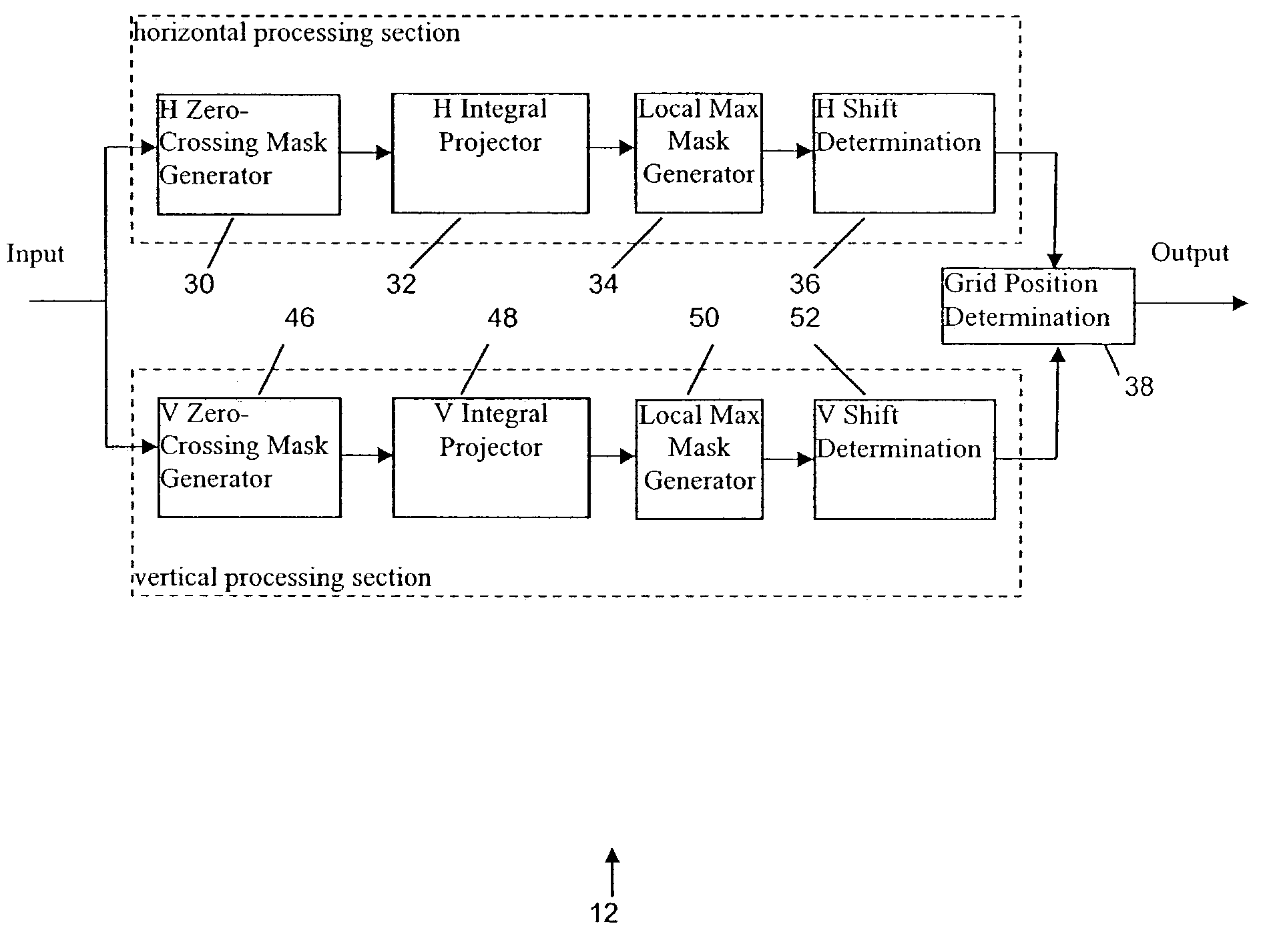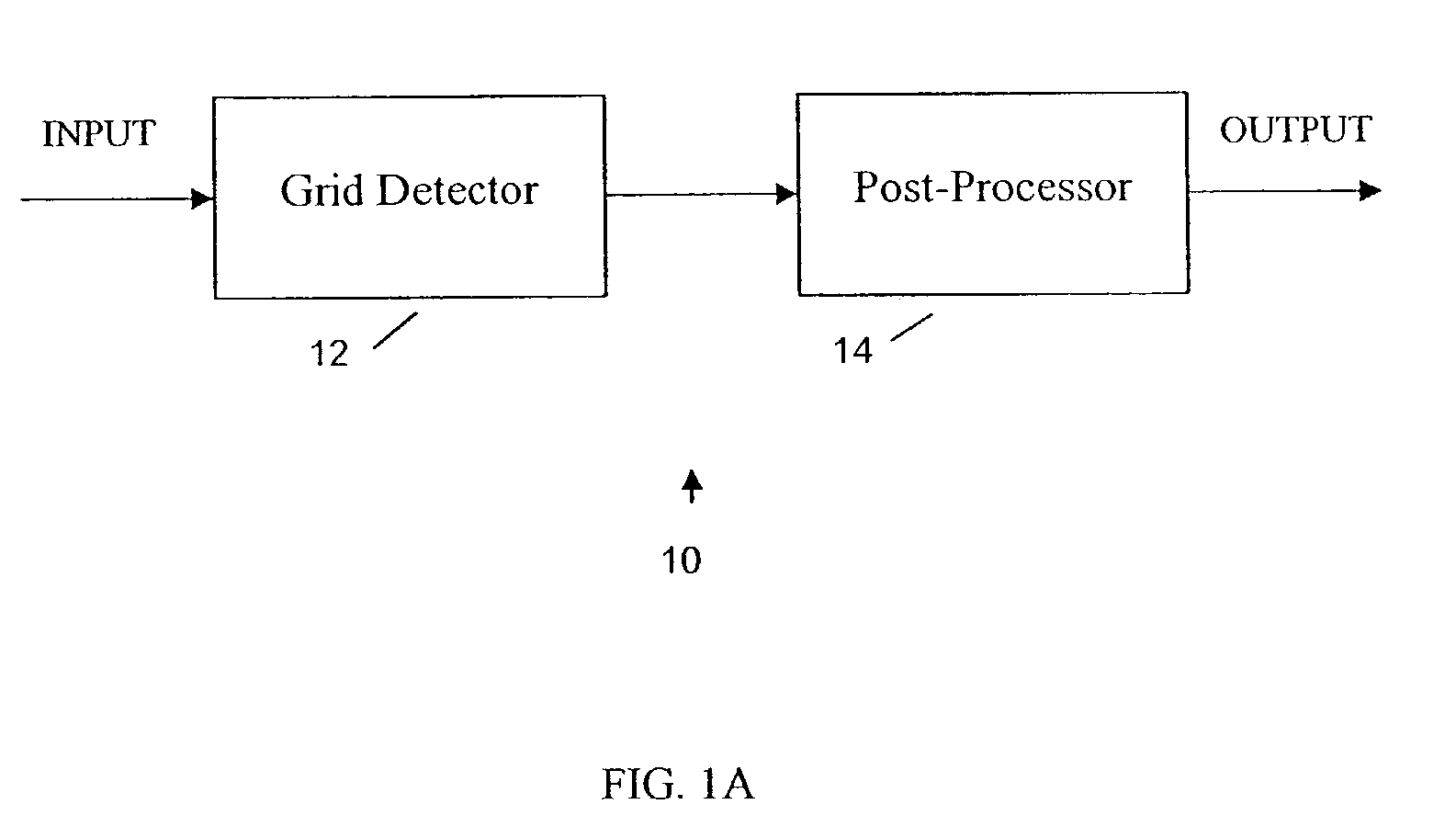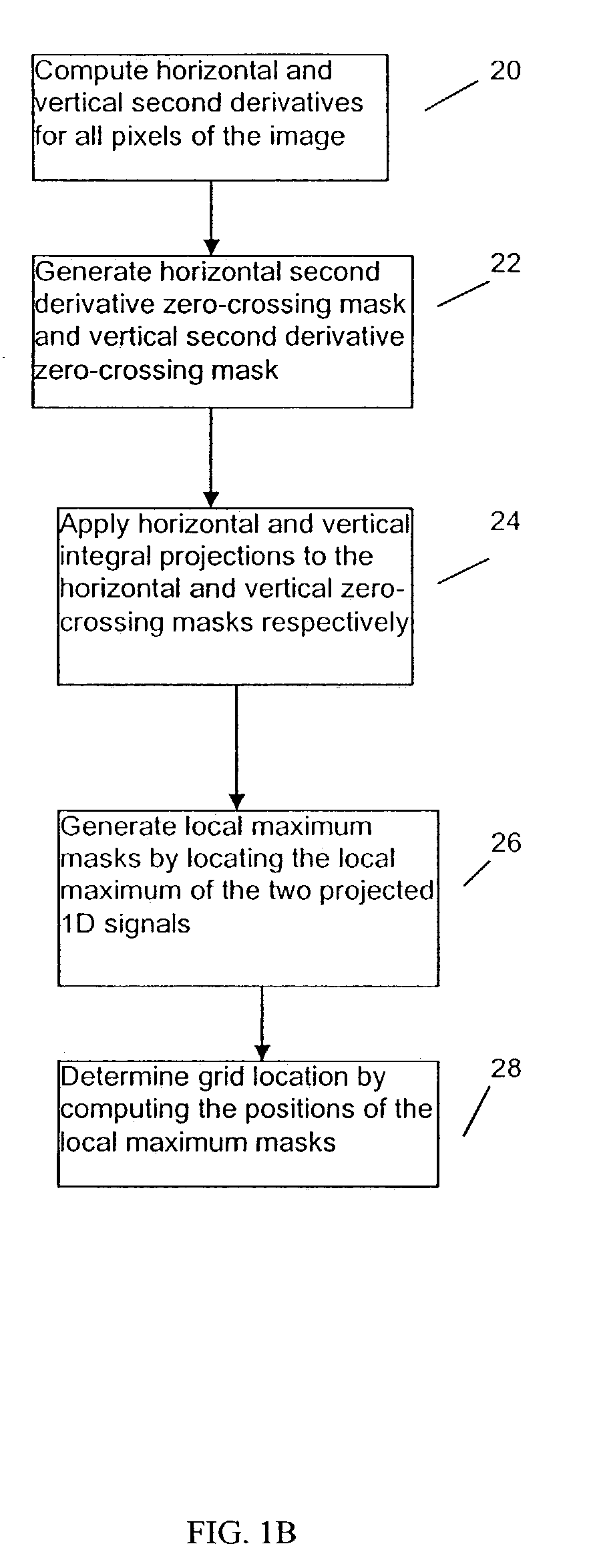Method for detecting grid in block-based compressed video
a block-based compressed video and grid technology, applied in the field of video signal processing, can solve the problems of inability to properly remove blocking artifacts, and based encoding techniques that introduce blocking artifacts between block boundaries
- Summary
- Abstract
- Description
- Claims
- Application Information
AI Technical Summary
Benefits of technology
Problems solved by technology
Method used
Image
Examples
Embodiment Construction
[0015]While this invention is susceptible of embodiments in many different forms, there are shown in the drawings and will herein be described in detail, preferred embodiments of the invention with the understanding that the present disclosure is to be considered as an exemplification of the principles of the invention and is not intended to limit the broad aspects of the invention to the embodiments illustrated.
[0016]As noted above, in one embodiment the present invention provides a grid detection method that can be used to control the post-processing for de-blocking. Referring to FIG. 1A, an example video processor 10 according to the present invention includes a grid detector 12 and a post-processor 14. The grid detector 12 detects if the input video includes a grid and computes the location of the grid if it exists. If a grid is detected, then the post-processor 14 is turned on and de-blocking is performed based on the grid location provided by the grid detector. If no grid is d...
PUM
 Login to View More
Login to View More Abstract
Description
Claims
Application Information
 Login to View More
Login to View More - R&D
- Intellectual Property
- Life Sciences
- Materials
- Tech Scout
- Unparalleled Data Quality
- Higher Quality Content
- 60% Fewer Hallucinations
Browse by: Latest US Patents, China's latest patents, Technical Efficacy Thesaurus, Application Domain, Technology Topic, Popular Technical Reports.
© 2025 PatSnap. All rights reserved.Legal|Privacy policy|Modern Slavery Act Transparency Statement|Sitemap|About US| Contact US: help@patsnap.com



